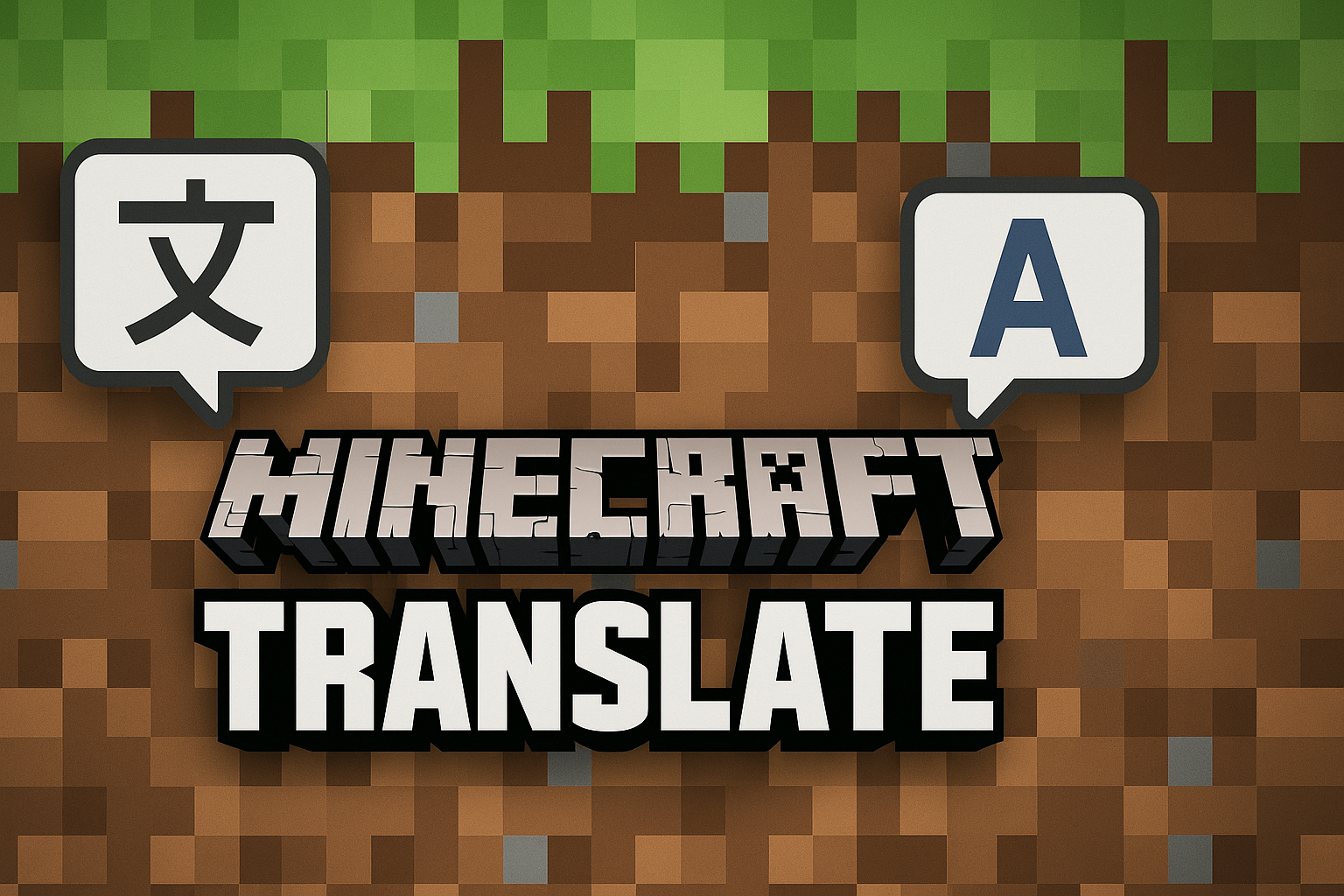Minecraft Translate: How to Translate Your Game and Why It Matters
Updated on
Published on

Introduction
Minecraft is not just a game – it’s a global phenomenon. With over 300 million copies sold and a community that spans across every continent, Minecraft's accessibility in multiple languages has been vital to its massive success. Behind this seamless multilingual experience lies a sophisticated process known as video game localization, or more specifically, efforts to translate game content for a worldwide audience. In this article, we’ll explore the concept of Minecraft translate, how translation impacts gameplay, and how tools like Crowdin are transforming the way developers manage multilingual content. Whether you're a fan, a developer, or a linguist interested in translating video games, this article is your complete guide to Minecraft localization and translation workflows.

What Does "Minecraft Translate" Mean?
At its core, "Minecraft translate" refers to the process of adapting Minecraft’s in-game text, menus, tooltips, chat settings, and more into different languages. This process is essential not only for understanding but for immersion. Imagine trying to explore, build, or survive in a game where you can’t read item descriptions or understand in-game messages. That’s where translation makes a huge difference.
Translating a game like Minecraft involves more than just converting words from English to Spanish or Chinese. It requires cultural adaptation, interface consistency, and community collaboration. And because Minecraft is so dynamic – with frequent updates and custom modding – keeping translations current is an ongoing effort.
Why Translating Video Games Is Critical
Translating video games like Minecraft serves several key purposes:
- Accessibility: Not all players understand English. A game translated into the player's native language improves comprehension and satisfaction.
- Retention: Players are more likely to stick with a game they understand. Good translations reduce frustration and increase engagement.
- Market Expansion: Localization opens up markets across Latin America, Asia, Eastern Europe, and beyond.
- Inclusivity: Language options foster a sense of global community and inclusiveness, particularly important in games like Minecraft that thrive on user collaboration.
A good game language translator can elevate a game’s perception from “just another release” to a globally celebrated experience.
Minecraft's Open Translation Model
One of the unique aspects of Minecraft’s translation strategy is its community-driven localization model. Mojang, the developer of Minecraft, allows volunteers around the world to contribute translations through structured platforms. These community members vote on the best translations, ensuring accuracy, cultural relevance, and up-to-date content.
But crowdsourcing translations can be tricky – how do you manage consistency, avoid errors, and synchronize with updates? That’s where translation management platforms come into play, and Crowdin is one of the leading tools that support this effort.
Crowdin: The Backbone of Minecraft Localization
Crowdin is a cloud-based localization management platform built for translating content quickly, collaboratively, and efficiently. It enables developers to manage multilingual content across software, websites, mobile apps, and yes – video games.
For Minecraft and many other projects, Crowdin streamlines the process of managing localization files, collaborating with volunteers or professional translators, and syncing translations with ongoing development.
How Crowdin Helps Translate Games
- Automated Syncing: Developers can connect their repositories (like GitHub) to Crowdin, so new content automatically appears for translation.
- Collaborative Interface: Translators can work side-by-side, leave comments, and vote on the best translations – all within one platform.
- Translation Memory: Crowdin remembers past translations to ensure consistency across similar phrases.
- Glossaries and Terminology Control: Maintains uniformity for key terms like "Creeper", "Ender Dragon", or "Redstone".
- QA Checks: Detects issues like missing placeholders or formatting errors before the translation goes live.
The Process of Translating Minecraft
Here’s a simplified overview of how Minecraft translations typically happen:
- Extraction: All translatable strings (menu items, system messages, etc.) are pulled from the game’s code into a format like JSON or XML.
- Upload to Crowdin: These files are uploaded into Crowdin, where contributors begin translating.
- Review & Voting: The Minecraft community votes on the best translations to ensure accuracy and tone.
- Integration: The translated files are downloaded and merged back into the game.
- Testing: QA checks ensure formatting, alignment, and context display correctly.
Release: Translations are included in the next game update or patch.
This game language translator workflow allows Minecraft to support dozens of languages – from German to Japanese to Brazilian Portuguese.
Modding and Custom Translations in Minecraft
Another reason why translating video games like Minecraft is unique is the strong modding community. Minecraft mods add new items, mobs, biomes, and mechanics – all of which often include custom language files. With the help of Crowdin, even independent mod developers can offer their creations in multiple languages.
Developers can integrate Crowdin into their mod development pipeline, just as easily as AAA studios do. The result is an enriched experience for non-English players, making fan-made mods just as accessible as the main game.
Challenges in Video game Translation
Even with tools like Crowdin, Minecraft translate is not without challenges:
- Context Matters: Words like “stone” or “mine” can be nouns or verbs depending on context. Without proper in-game usage reference, translations can be ambiguous.
- UI Constraints: Some languages (like German) have longer words, which can break the game layout if not handled correctly.
- Consistency: Ensuring that terms are consistent across the base game, expansions, and community mods can be tough.
- Updates: Minecraft receives frequent updates. Keeping translations synced is an ongoing effort.
- Slang and Tone: Minecraft has a whimsical tone. Translators need to maintain that without sounding too formal or too silly.
Crowdin addresses many of these issues with automation, context screenshots, and collaboration features.

Crowdsourcing vs. Professional Translation
Minecraft exemplifies a hybrid model: while crowdsourcing can quickly cover many languages and tap into native speaker knowledge, professional translators are sometimes needed for complex strings or legal content.
Crowdin facilitates both workflows, allowing game studios to choose their preferred model – or blend both for maximum efficiency. Whether it’s a small indie developer or a global brand like Mojang, Crowdin scales to fit the project's size and style.
Final Thoughts: The Future of Minecraft Translation
As Minecraft continues to evolve, translation will remain a pillar of its global success. With more languages being added and new features constantly released, the need for accurate, timely, and culturally aware localization grows stronger.
Tools like Crowdin are not only making it easier to translate games, but also empowering communities to contribute meaningfully. In the case of Minecraft, the game isn’t just built block by block – it’s also translated word by word by passionate fans and tech-savvy tools working in harmony.
Whether you're a gamer looking to explore new mods in your native language, a developer aiming to reach global audiences, or simply someone fascinated by the linguistic magic behind digital worlds, Minecraft translation is a compelling case study in modern-day localization.







